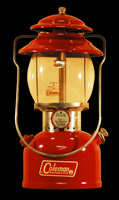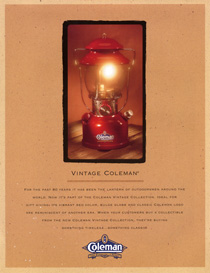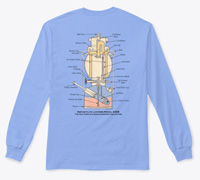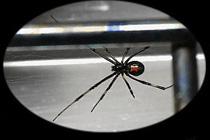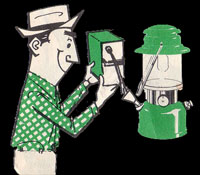 Safety with Lamps and Lanterns
Safety with Lamps and Lanterns
A quart of gasoline within inches of an open flame—what could possibly go wrong?
These safety pages are provided as a supplement to the manufacturer’s safety instructions located in your Owner’s Manual or User’s Guide. If you do not have this document, please check here to download and print one.
Here are a few tips to help you and your family stay safe with lamps and lanterns.
1. Think safety, and where is your fire extinguisher?
2. Do not modify a lantern for any reason. If you do, make sure you understand the word liability because you're going to hurt someone.
3. Don’t attempt to light it if you don’t know what you are doing. If you have never lit a lamp or lantern or have forgotten how, please read your Owner’s Manual or click here for a quick tutorial on how it’s done.
4. Always inspect the appliance before you use it, even if that was just yesterday. Especially if you know little or nothing about the lamp or lantern, you must confirm that it is safe. Look for damp spots on and under the fuel tank and test the function of each control.
5. Never fuel or light a lamp or lantern inside your home, cabin or tent. Perform these tasks outside, in an area where a defective part or "operator error" won't be disastrous.
6. Never loosen the fuel filler cap while the lamp/lantern is burning. Turn the appliance off and allow it to cool first.
7. Always place the burning lamp or lantern where it can't get knocked over, and where unsuspecting fingers can't touch it. Protect those that cannot protect themselves. Keep appliances and fuels away from children and pets.
8. Always maintain proper ventilation. Appliances need oxygen and so do you. If there isn’t enough to go around, you'll lose.
9. Lower the bail each time you set a burning lantern down. If you leave it upright, it can get damn hot. Grabbing a hot bail can burn you and/or cause you to drop a burning lantern.
10. Tilt your lantern slightly when de-pressurizing, or removing the fuel filler cap. By tilting the lantern to one side and placing the fuel filler cap at the top of the tank, you greatly reduce the chance of liquid fuel spraying all over the place when it de-pressurizes.


